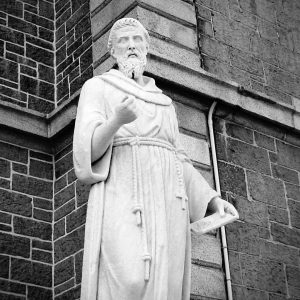The legend of
Su Filindeu
Su filindeu was born as a soup of the poor. It has existed since the dawn of time although there is no precise date of its birth.
Paola Abraini (Nuoro resident)
Su filindeu was born as a soup of the poor. It has existed since the dawn of time but there is no precise date of its birth.
Paola Abraini (Nuoro resident)
One of the most romantic food stories ever told
Once reserved for weary pilgrims, su filindeu remains a rare and sacred expression of love through food.

Quite how or why a unique style of pasta made from hundreds of tiny strands of dough came to be is shrouded in almost as much mystery and intrigue as the occasion it represents.
The legend goes that a young man from the isolated town of Nuoro in Sardinia called Francesco Tolu was wrongly accused of murder and went on the run until he could prove his innocence.
His daring escape led him to the hills and caves in the countryside near the tiny commune of Lula, where he remained in hiding until a court dropped all charges against him. In recognition of his exoneration, he built a tiny church in dedication to Saint Francis [of Assisi], the Catholic friar who loved nature and embraced a life of poverty.
Ever since, twice a year, hundreds of pilgrims travel the 33k route from Nuoro to the tiny church of Santuario di San Francesco on foot and horseback under the cover of darkness. Upon arrival, they are greeted with a bowl of su filindeu served in a mutton broth with fresh Pecorino cheese.
Grazia Deledda, the Nuoro-born Nobel Prize for Literature-winning author doesn’t mention su filindeu by name in her 1903 novel Elias Portolu, but the protagonist’s celebratory feast upon returning from a pilgrimage is widely interpreted as being this iconic and unfathomably beautiful Sardinian dish.
The miracle of Francesco's innocence is represented by this miraculous pasta.
Leo Gelsomino (Lello Pasta Bar)
